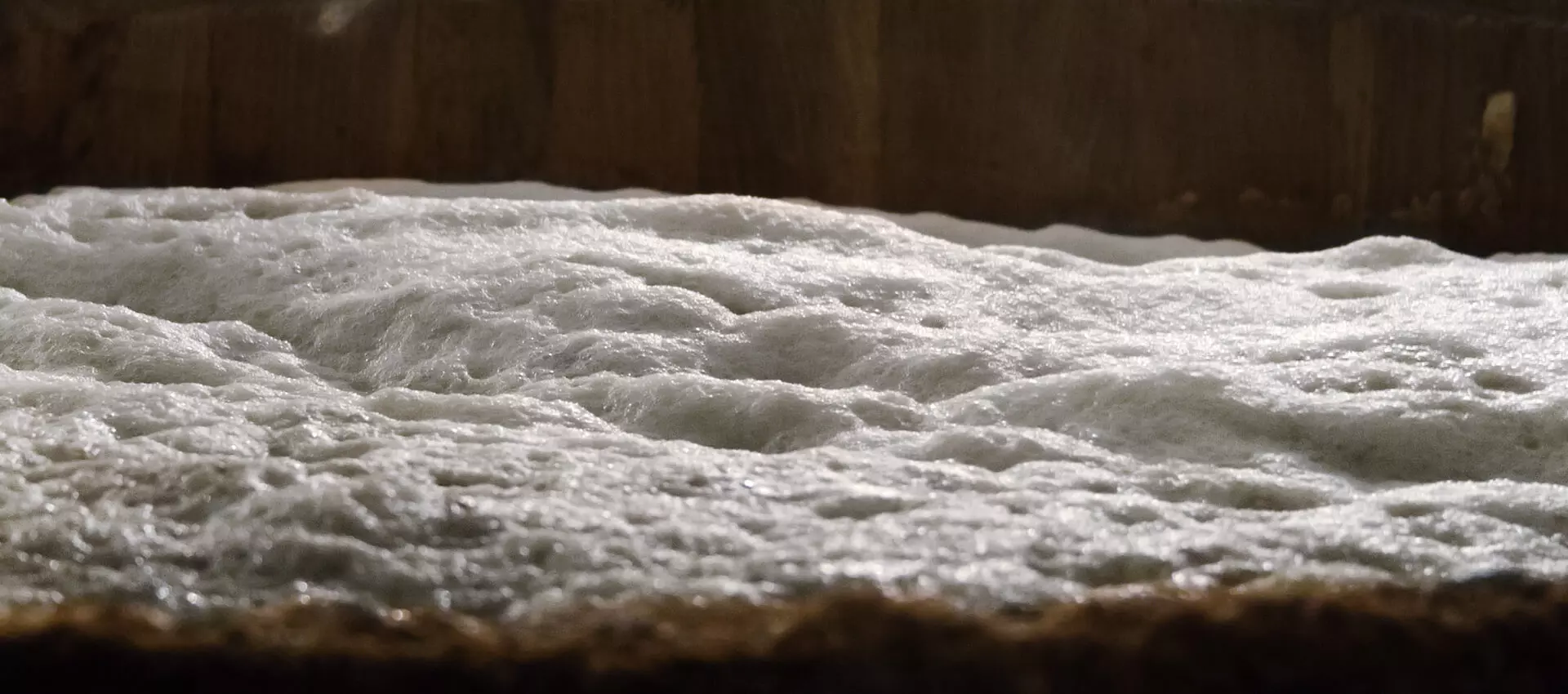
Alcoholic Fermentation.
How Our Flens Produces Its Alcohol And Fizz.
Abstract
Beer without fermentation? That's not possible! Read this article to find out why fermentation is not a hot air act.
Alcoholic Fermentation: A Metabolic Process For The Production Of Beer.
Today we're talking about alcoholic fermentation, the heartbeat of our FLENS. Without this process, our beer would just be lame sugar water - no fizz, no alcohol, no enjoyment. Fermentation requires sugar, enzymes and, of course, our hard-working yeast cells. And the whole thing has to run smoothly without oxygen. Sounds complicated? Don't despair, we'll explain it to you!
-
Did You Know?
Alcoholic fermentation is one of the oldest biochemical processes used by humans. The Sumerians were already producing beer over 7,000 years ago.
Fermentation Without Air - How Does It Work?
When it comes to fermentation, everything has to take place without air. This is called anaerobic. At the beginning, when the wort enters the fermentation tank, we add a little oxygen. This is important so that our yeast cells can really get going. But then it's time to put the lid on and let the air out!
As soon as the oxygen is gone, the little helpers - our yeast cells - start to ferment. Incidentally, these are not bacteria, but unicellular fungi. They switch from respiration with oxygen to alcoholic fermentation. Enzymes turn sugar into alcohol and carbon dioxide.
Energy Efficiency Of Fermentation.
Curiously, alcoholic fermentation is not very energy efficient. Think of yeast as a thrifty craftsman. During fermentation, it only obtains a fraction of the energy from the sugar that it would if it had oxygen. But that doesn't matter! This apparent weakness is actually its strength.
By getting by with less energy, yeast can also work without oxygen. And that's exactly what we need for our beer. The yeast produces less energy for itself, but more of what we value in beer: Alcohol and carbon dioxide.
This is how the clever yeast turns its “energy saving” into an advantage and creates the unique taste that we love so much about our FLENS.
Glucose: Sugar For Alcoholic Fermentation.
Before our delicious FLENS reaches the bottle, things really get going in our brewery. It all starts with malting in the malt house - the starting signal for our beer, so to speak. The barley is soaked so that it can germinate. At first, this bears little resemblance to beer - but it is very important!
Enzymes are produced during germination, and these are worth their weight in gold. They are later responsible for converting the starch into sugar. And this sugar is the fuel for our industrious yeast cells.
As soon as we add the yeast, the process begins: it eats the sugar and turns it into alcohol and carbon dioxide. And suddenly we are much closer to the end product! Incidentally, beer can also ferment in the bottle - in a process known as bottle fermentation.
Simply put: no FLENS without sugar. And no perfect drink without our clever master brewers. If you want to find out more about our brewing process, you can read our blog Understanding FLENS. There you'll find all the information on how exactly grain is turned into our delicious beer.
-
Some yeast species, such as Saccharomyces cerevisiae, exhibit the so-called crabtree effect. This means that they ferment even in the presence of oxygen when the sugar concentration is very high.
How Long Does Beer Have To Ferment?
The fermentation of our FLENS starts when we pour the wort into the fermentation tank and add the yeast. But be careful: the wort has to cool down first because we heat it to 100 °C beforehand. That would be far too hot for the yeast.
For our bottom-fermented FLENS, we cool the wort down to at least 12 °C, for top-fermented beer 20 °C is sufficient. Only then is the yeast added. In this way, we ensure that our little helpers do not kick the bucket straight away, but can ferment diligently.
When fermenting beer, a basic distinction is made between primary fermentation and maturation. Primary fermentation takes up to a week, while maturation in the storage tank varies depending on the type of beer and can take up to 6 weeks. During maturation, the last yeast cells slowly seep to the bottom of the storage tank and can then be removed by our master brewers.
Thanks to the alcoholic fermentation, the result is a naturally cloudy beer that is now filtered and filled into our typical swing-top bottles.
Temperature Sensitivity Of Fermentation.
You should know that alcoholic fermentation is very temperature-sensitive. Temperatures that are too high or too low can slow down the process or even bring it to a complete standstill. However, the temperature at which fermentation is most successful depends on the brewing process and the yeast strain.
-
In addition to ethanol and CO2, fermentation also produces small quantities of other substances such as glycerine, which contribute to the taste and mouthfeel of the beer.
Limits Of Alcoholic Fermentation.
It is interesting to note that alcoholic fermentation has its limits. From an alcohol content of around 15 %, yeasts stop fermenting as they are killed by the alcohol. This explains why most beers and wines are below this level. For higher alcohol contents, additional processes such as distillation are necessary.




